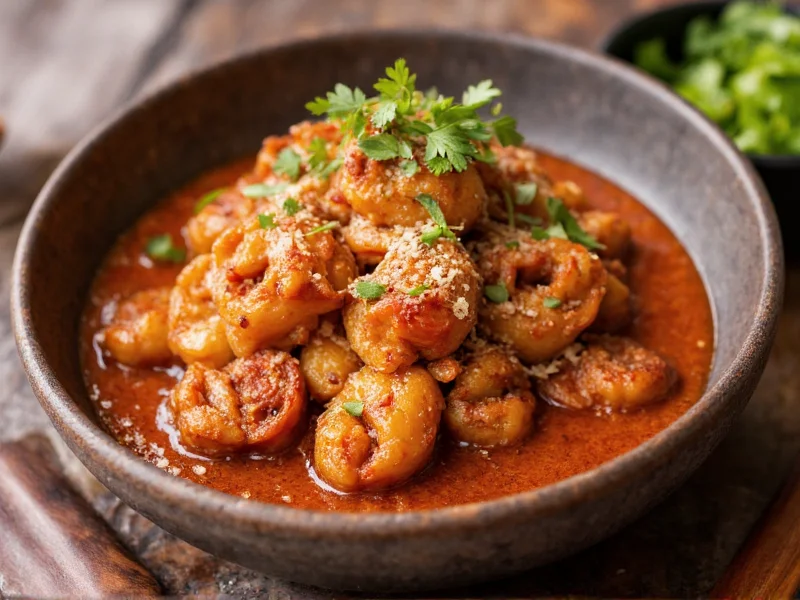Understanding savory umami unlocks a fundamental dimension of culinary science that has shaped global cuisines for centuries. First identified by Japanese chemist Kikunae Ikeda in 1908, umami wasn't officially recognized as the fifth basic taste until 2000, when researchers confirmed humans possess specific taste receptors for glutamate. This discovery transformed our understanding of flavor chemistry and explains why certain food combinations create extraordinary depth.
The Science Behind Umami Perception
Umami works through specialized taste receptors on the tongue that respond to glutamate, inosinate, and guanylate compounds. These receptors trigger a unique neurological response that registers as savory rather than simply salty or meaty. The magic happens when glutamate-rich foods combine with inosinate-containing ingredients—a phenomenon called umami synergy. For example, pairing tomatoes (glutamate) with Parmesan cheese (inosinate) creates a flavor intensity greater than the sum of its parts.
Unlike salt, which primarily enhances other flavors, umami contributes its own distinct taste profile while simultaneously boosting overall flavor complexity. This explains why a dash of soy sauce can transform a simple soup or why mushrooms elevate vegetarian dishes to satisfy meat-eaters.
Natural Umami Powerhouses
While monosodium glutamate (MSG) gets attention, countless whole foods deliver authentic umami naturally. These ingredients form the backbone of flavor in traditional cuisines worldwide:
| Food Category | Top Umami-Rich Examples | Key Compounds |
|---|---|---|
| Vegetables | Ripe tomatoes, Shiitake mushrooms, Asparagus, Seaweed | Glutamate |
| Fermented Products | Miso, Soy sauce, Fish sauce, Kimchi | Glutamate (from fermentation) |
| Aged Products | Parma ham, Aged cheeses (Parmesan, Gouda), Anchovies | Inosinate, Glutamate |
| Meat & Seafood | Kombu dashi, Bonito flakes, Cooked meats, Shellfish | Inosinate, Guanylate |
Umami Across Global Cuisines
Traditional cooking techniques worldwide have intuitively harnessed umami flavor profile for generations. Japanese dashi broth combines kombu seaweed (glutamate) with bonito flakes (inosinate) to create the foundation of countless dishes. Italian cuisine relies on the umami synergy between tomatoes and Parmesan cheese. French demi-glace achieves depth through slow-cooked reductions of meat and mushrooms.
Understanding these traditional pairings helps modern cooks create balanced flavors without excessive salt. The natural umami sources in these combinations satisfy our taste receptors more completely, reducing the need for added sodium while increasing perceived richness.
Practical Applications in Everyday Cooking
Enhancing savory umami foods in your kitchen requires understanding flavor layering. Start with these evidence-based techniques:
- Build flavor foundations: Sauté mushrooms with onions before adding liquids to soups and stews
- Leverage fermentation: Add small amounts of miso or fish sauce to sauces and dressings
- Maximize ripeness: Use fully ripe tomatoes rather than underripe ones for sauces
- Embrace aging: Grate fresh Parmesan over dishes rather than using pre-grated cheese
- Combine synergistically: Pair tomato-based sauces with a Parmesan rind while cooking
Chefs seeking to master umami in cooking should focus on layering multiple umami sources rather than relying on single ingredients. A vegetable broth gains depth from kombu and dried shiitakes. A vegetarian Bolognese becomes satisfying with tomatoes, mushrooms, and a splash of soy sauce.
Addressing Common Misconceptions
Despite persistent myths, umami occurs naturally in countless whole foods and isn't synonymous with MSG. The umami taste experience has been part of human cuisine long before MSG was isolated. Research shows umami-rich foods can actually help reduce sodium intake by 10-20% while maintaining perceived saltiness.
Numerous studies confirm that naturally occurring glutamate in foods behaves differently in the body than isolated MSG. The science of savory umami reveals it as an essential component of balanced nutrition, helping create satisfying meals with fewer calories and less sodium.
Creating Umami-Rich Dishes: A Practical Example
Consider a simple mushroom risotto enhanced through umami principles. Start by sautéing dried porcini mushrooms (high in guanylate) with fresh creminis (glutamate). Add rehydrating liquid to the cooking broth along with a Parmesan rind (inosinate). Finish with fresh Parmesan and a splash of soy sauce. This layered approach creates exponential flavor depth compared to using mushrooms alone.
For plant-based cooking, understanding umami vegetarian sources becomes crucial. Combining tomato paste, nutritional yeast, and dried mushrooms creates satisfying depth in vegan sauces and stews that mimics traditional meat-based umami.











 浙公网安备
33010002000092号
浙公网安备
33010002000092号 浙B2-20120091-4
浙B2-20120091-4